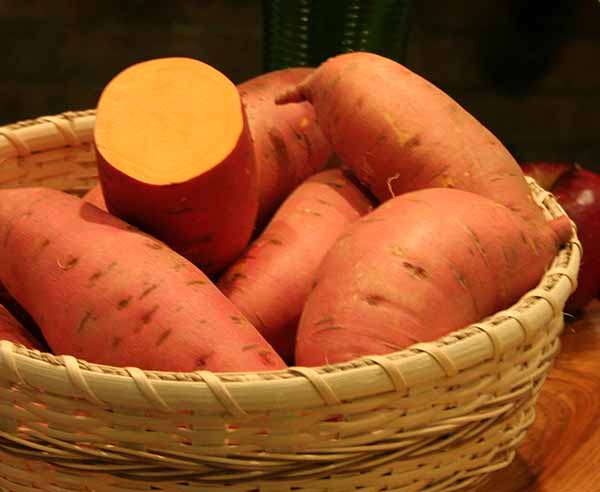
The new potato varieties with high concentration rate of beta-carotene.
Rwanda has introduced five new sweet potato varieties, in an intensified effort to fight stunting, which has become a national concern.
Available figures from Integrated Household and Living Conditions Survey (EICV4-2015) in September 2015 indicated that 38% of Rwandan Children below five years were stunted.
To deal with the matter, the government has set a target to cut down the stunting rate from the current 38% to 15%, by 2024.
As part of contributing factors, new potato varieties with high concentration rate of beta-carotene – the component that turns into Vitamin A after digestion, were yesterday launched in Kayonza district, Eastern Province.
Beta carotene is a red-orange pigment found in plants and fruits, especially carrots and colourful vegetables. The name beta carotene comes from the Greek “beta” and Latin “carota” (carrot).
The total of five varieties unveiled in Kayonza includes Cecelia, Esther, Kyabafirika, new Kawogo and Otada that originate from Mozambique.
Before unveiling the varieties, researchers at Rwanda Agriculture Board (RAB) put them under an evaluation period of three years at Rubona research station in Huye district, Southern province.
Damien Shumbusha, head of National Sweetpotato Program at Rwanda Agricultural Board (RAB) said that “these new varieties have needed diet components to fight malnutrition better than local varieties,”
“We have traced these varieties right from their countries of origin. Today we have started demonstration phase, but they will be integrated into communities after four months.”
According to Shumbusha, these new sweet potato varieties have the capacity to yield over 10 tons per hectare, compared to local varieties that yield less than nine tons.
“The research we conducted indicated that these new varieties are resistant to diseases and climatic changes. Making them suitable for our farmers.”
According to RAB, other seedlings of these new sweet potato varieties will be extended to farmers in the western and southern provinces, early next year.
The orange-fleshed sweet potatoes (OFSP) are harvested in four months from the period of planting.
Introduction of new sweet potato varieties finds other intensified measures to fight to stunt including the One-Cow-Per-Poor-Family program (Girinka), distributing fortified flour to vulnerable parents with children under five, among others.
The Government has set aside Rwf3 billion annually to fight stunting among Children.
According to the International Potato Center (IPC) – a research facility that seeks to reduce poverty and achieve food security, appreciated Rwanda’s efforts to fight stunting.
Jean Claude Nshimiyimana, a research associate at ICP said that “the rate of stunting can be dealt with using long term measures. This is one of them. These sweet potato varieties have high rate betarcarotene,”
“It is better when these new varieties are eaten by children to prevent them from malnutrition. This is scientifically proven. It is also economically profitable.”

